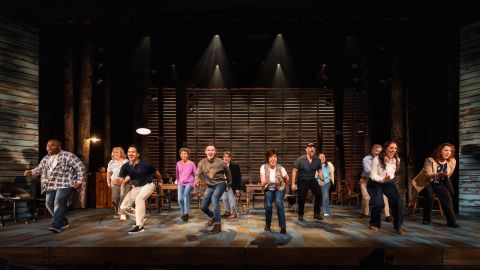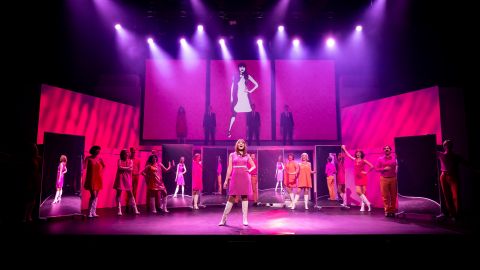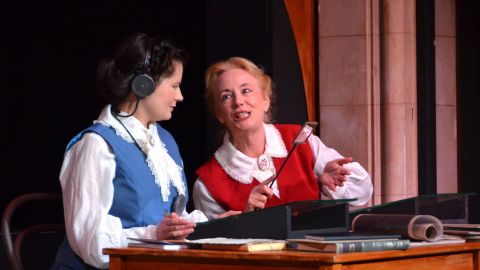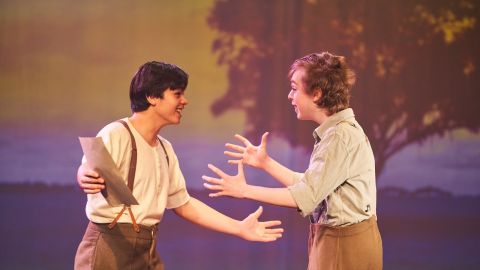Dusty – Bankstown Theatrical Society
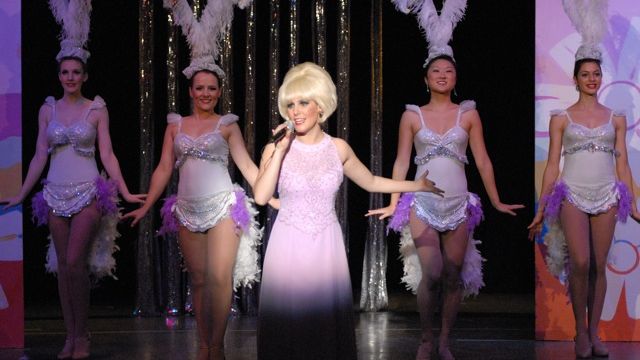
Director and Musical Director’s Diary by Diane Wilson and Greg Crease
Although jukebox musicals are not our favourite type of musical, there was something in Dusty’s story that made us feel it was a worthwhile piece to direct and musical direct. We had not seen the original professional production and so looked at it from a new perspective. We felt the book, written by John Michael-Howson, David Mitchell and Mel Morrow, had all the ingredients for a good night at the theatre and that the songs were well placed to tell the story of the life of Dusty Springfield. Dusty was Britain's greatest pop diva, and also the finest white soul singer of her era, a performer of remarkable emotional resonance whose body of work spans the decades. Although a camp icon of glamorous excess in her towering beehive hairdo and panda-eye black mascara, intimacy and Springfield's voice transcended image and fashion, embracing everything, from lushly-orchestrated pop, to gritty R&B, to disco, with unparalleled sophistication and depth. Also her personal life was definitely a story that makes great theatre. Another reason we wanted to do the show was because we had the services of two great choreographers, Ronne Arnold and Edward Rooke. Ronne knew the style of the show so well and he had been a great friend of Dusty Springfield and was a great asset helping us get to know the lady.
Why Bankstown chose this musical.
There were a few reasons why this piece was chosen. Firstly, Bankstown Theatrical Society is situated in a highly ethnic area and needs to perform shows that bring in audiences from outside the area. This would be the first Sydney community theatre production. Secondly we are looking for that next generation of audience and felt that the music of Dusty would encourage that group to come to the theatre.
The first production meeting.
As usual, when we direct and musical direct, we got together at our home with the production team for a barbecue and discussion about how we were going to approach this musical. My greatest worry as director was that the piece moves very quickly from scene to scene. Fortunately at the Bankstown theatre we have fly lines, so I decided to use what I call the ‘Flying Flats’. This is three sets of flats on separate lines PS, Centre Stage and OP. These can be flown in and out making separate playing areas, while scenes are preset behind the other flats. It’s an old style, but very effective in moving the play along quickly.
The Auditions.
The part of Dusty was, to the production team, going to be the hardest part to cast. She didn’t have to be a ‘Dusty look-alike’ but needed to have some of the qualities of Dusty. We were a bit worried because we didn’t have a great number of people trying for the role. We knew we had one girl, Amy Toledano, who was a graduate of the Music Theatre School of the Australian Institute of Music, very interested in the role. She had a small role in our last production, Miss Saigon, and we knew that she could sing and act the role, but thought that she would be too young. However, she did a very clever thing and came dressed and made up looking like Dusty Springfield and we realised that she could certainly play the role. So she got the part and we were thrilled with her performance. The other role that was difficult to cast was Reno. Not being able to get an African American for the role, we decided to cast a young actor, Cara Lee (also from the Australian Institute of Music), who is of Turkish origin with an incredible soul voice. With a little bit of subtle help from make-up and wigs Cara played the part of Reno admirably.
The Rehearsals
The rehearsal period was a bit strange for us as we were not in our regular hall, which is being renovated. We were offered a space at the Chester Hill Community Centre but it was difficult because it was an after school care centre - there was no space for us to keep our piano so we had to cart it backward and forward for rehearsals. Rehearsals went well except for the usual problem that all groups encounter – absenteeism. Sickness, work and all the other problems that directors, musical directors and choreographers face. However, we managed, with hard work from all, to get the show ready for the audience.
The Orchestra
Being a small orchestra, I (Greg) had to choose players wisely, as there is no place to hide a 2nd rate player in Dusty. We had a mixture of old pros, dedicated community players and students, one of whom was a 13 year old trumpet player who more than adequately filled the bill.
Audiences.
The audience was a little less than what we hoped, but generally good houses seemed to enjoy the show very much. The authors, David Mitchell and Mel Morrow, attended a performance, met the cast and had great praise for them and the production. They are constantly revising the work and BTS’s production gave them more ideas.
Summary
We were glad that we took on this piece and thoroughly enjoyed working on it and exploring the rather sad life of Dusty Springfield. We were thrilled with all the cast, but particularly have to mention Amy Toledano, who was amazing in the role. We thank her for the incredible work she put in to make this role so believable.
Production Team.
Diane Crease (Director), Greg Crease (Musical Director), Ronne Arnold and Edward Rooke (Choreographers), Libby Benn, (Stage Manager), Greg Smith (Lighting), Tony Attard, Ann Whittaker, Betty Cairncross (Costumes), John Plaege (Props) Vince Cairncross (Scenery Artist), Ben Dodd (Scenery).
Originally published in the July / August 2010 edition of Stage Whispers.

